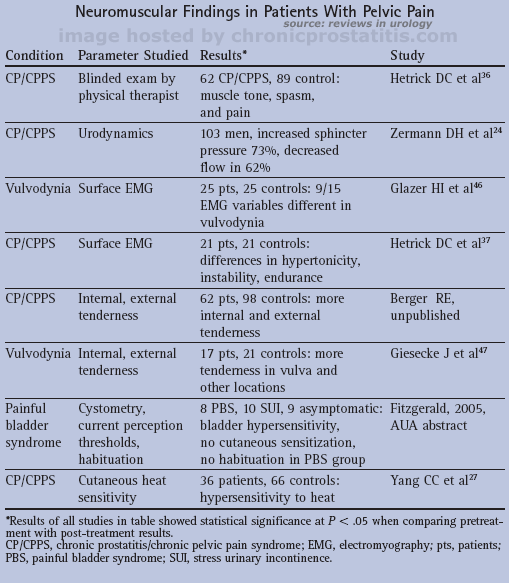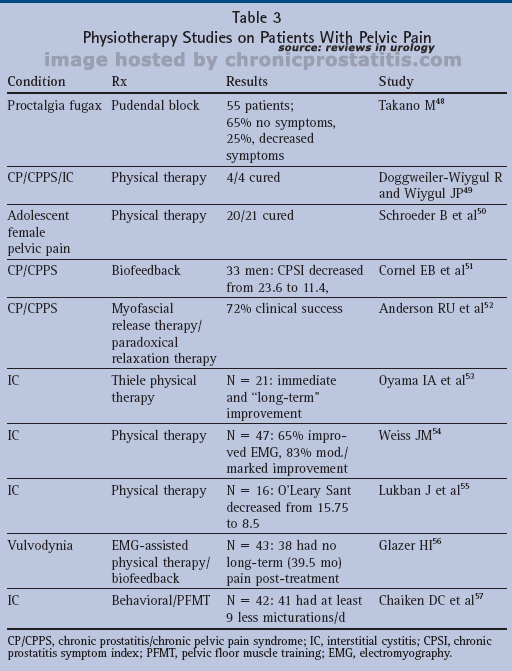

Nickel et al wrote:Main Points
- In chronic prostatitis/chronic pelvic pain syndrome (CP/CPPS), pain is perceived in the pelvis and, in the absence of classical pathology, is called pelvic pain syndrome.
- If nonpainful stimuli are more intense but not painful, the process is called hypersensitivity. If nonpainful stimuli become painful, it is called allodynia.
- Referred pain occurs when pain is felt in a part of the body other than where it originates.
- Pain is a sensation that requires perception and thus is associated with interpretation and a range of responses, both physical and psychological.
- Tricyclic antidepressant medications have been shown to be effective in treating neuropathic pain.
- The anticonvulsants gabapentin and pregabalin have the potential to alleviate the neuropathic pain associated with CP/CPPS.
- CP/CPPS has many similarities to interstitial cystitis/painful bladder syndrome/bladder pain syndrome, including the presence of pelvic pain and, often, voiding symptoms.
- Incision of the bladder neck has been reported to be effective in men with prostatitis and evidence of bladder neck dyssynergy on videourodynamic studies.
- Neuromodulation may play a role in treating CP/CPPS.
- Recognition of the role of myofascial abnormalities of the pelvis in CP/CPPS has led to several reports of symptom relief by physiotherapy.
- Cognitive-behavioral interventions are successful in other chronic pain states, and an NIH-sponsored pilot program is evaluating their use in CP/CPPS management.
